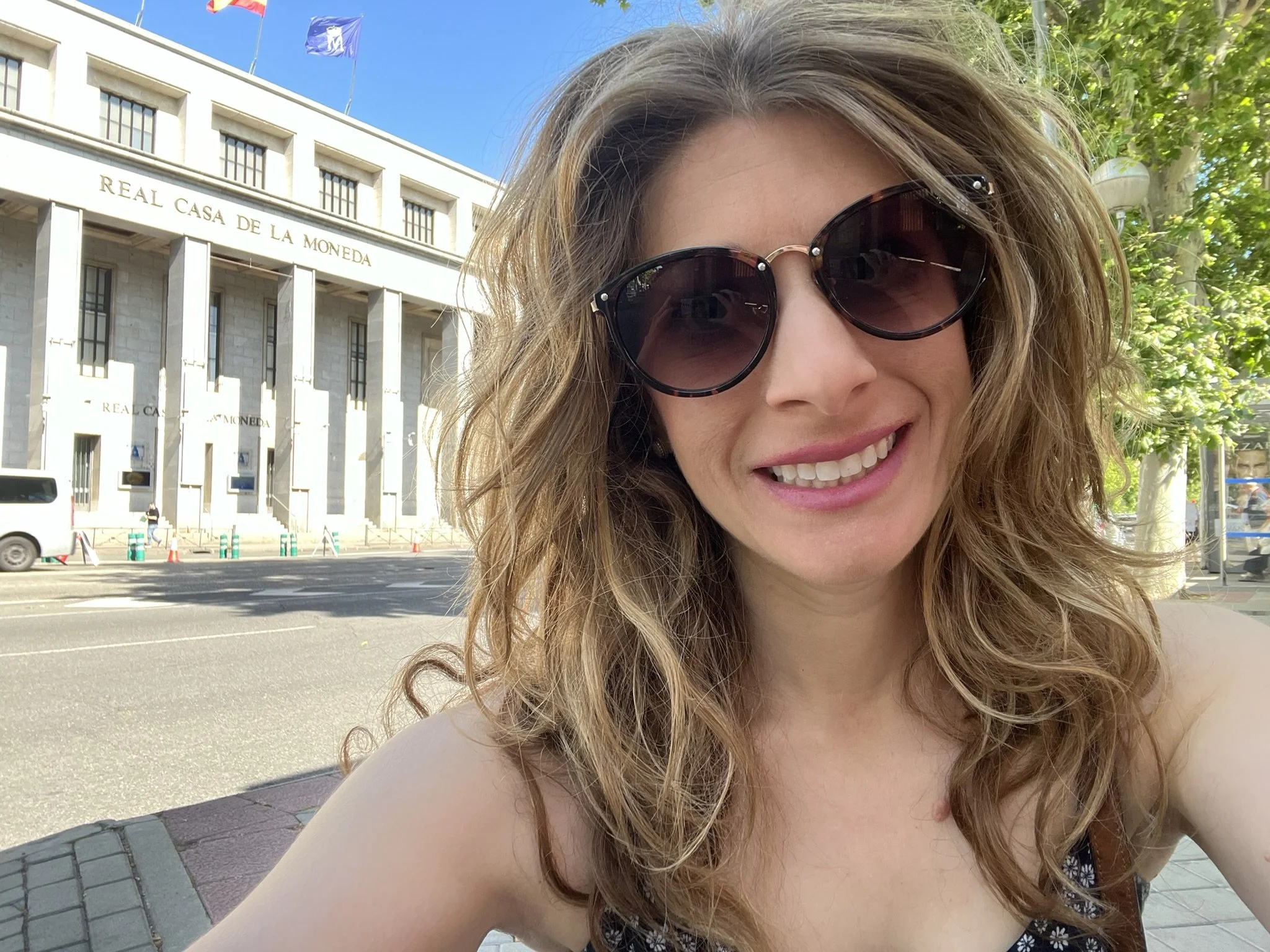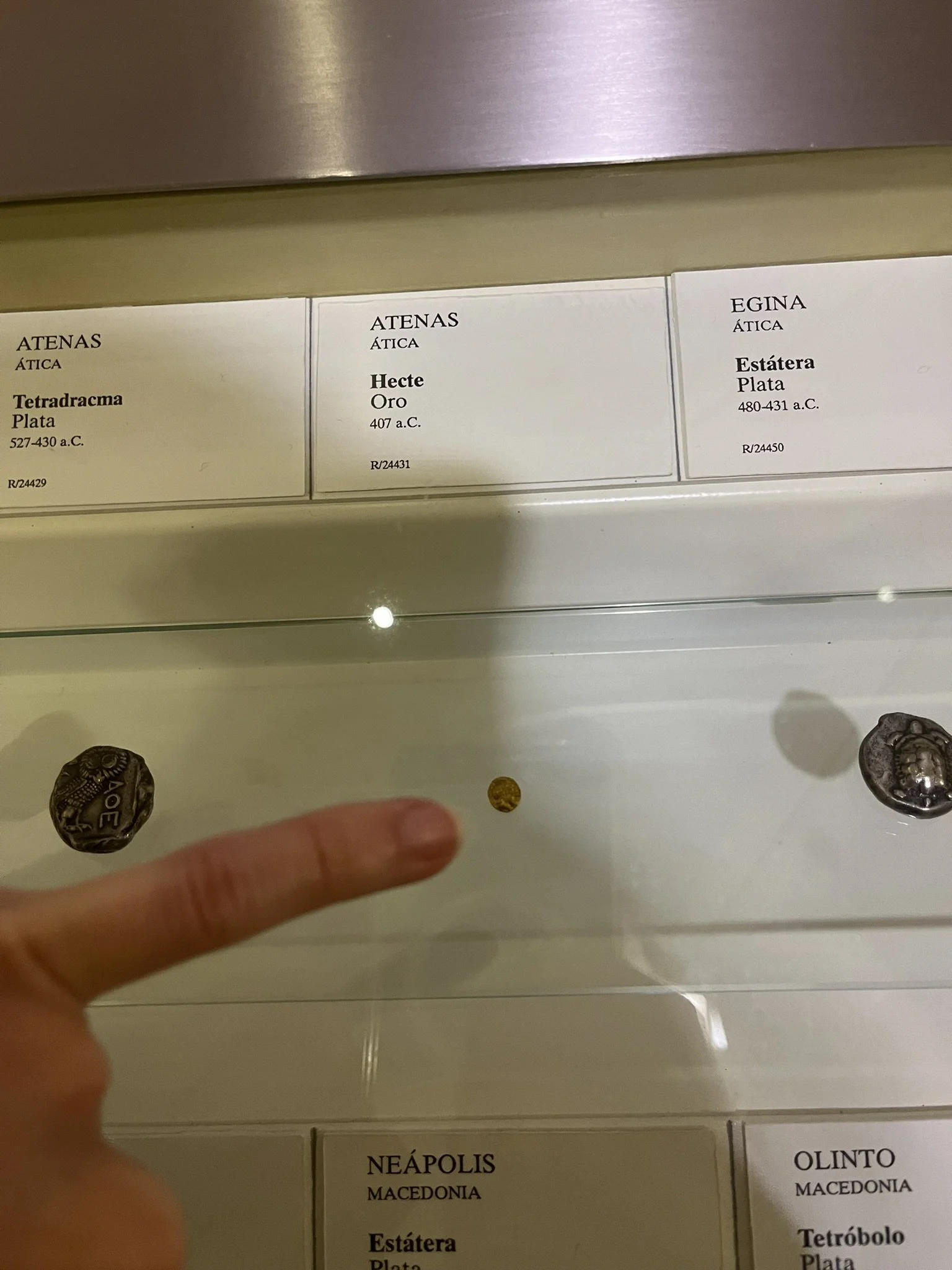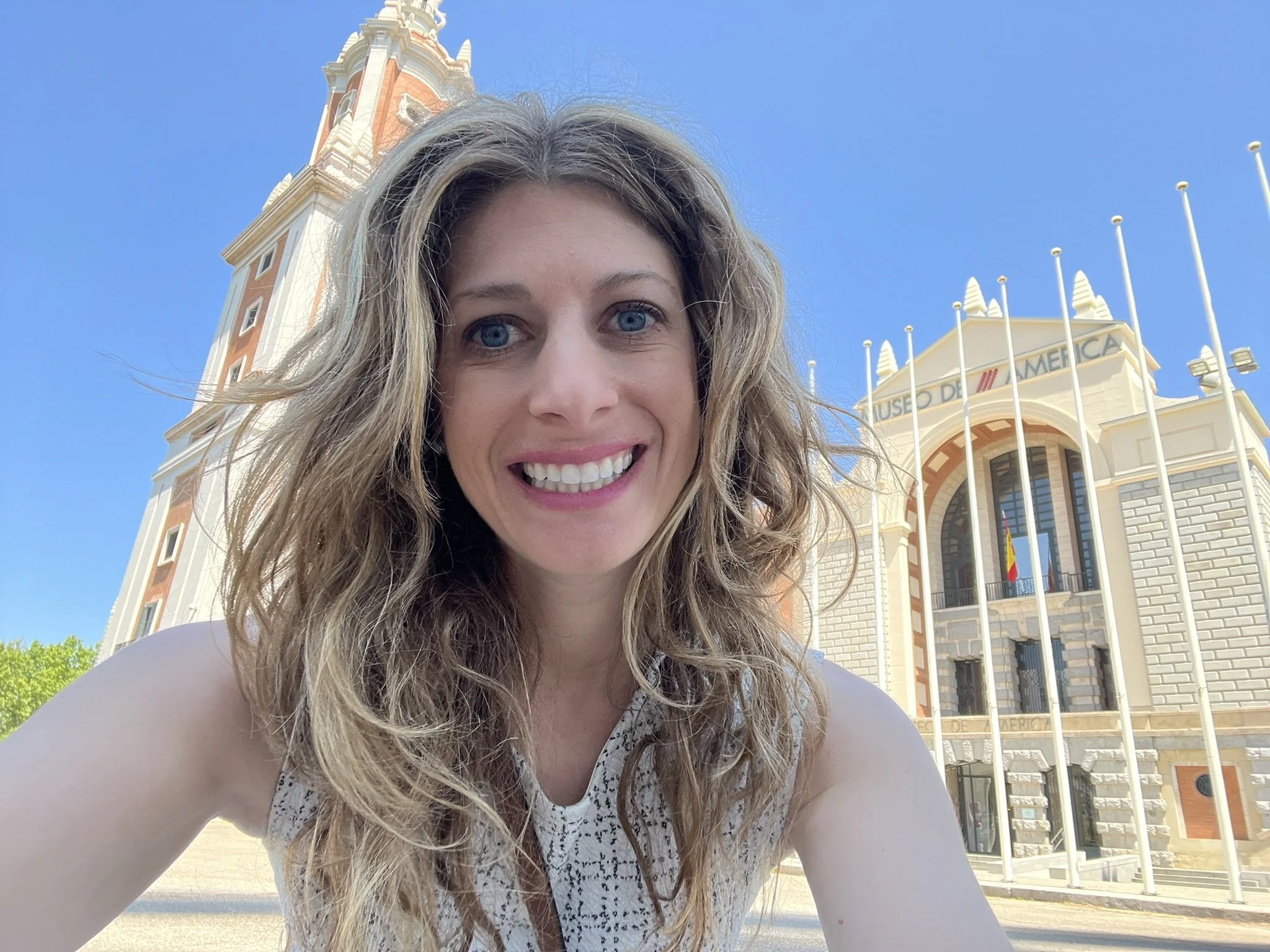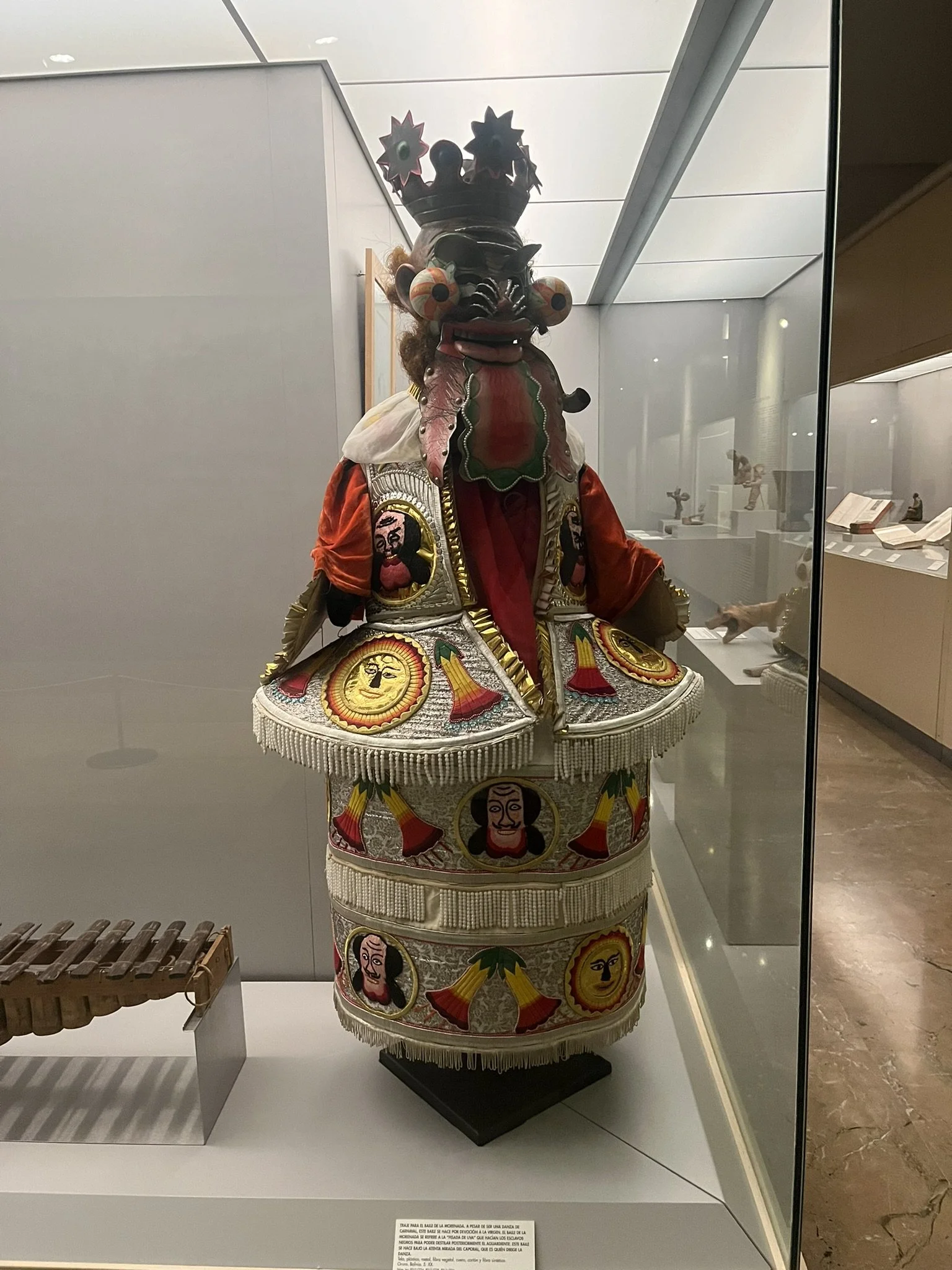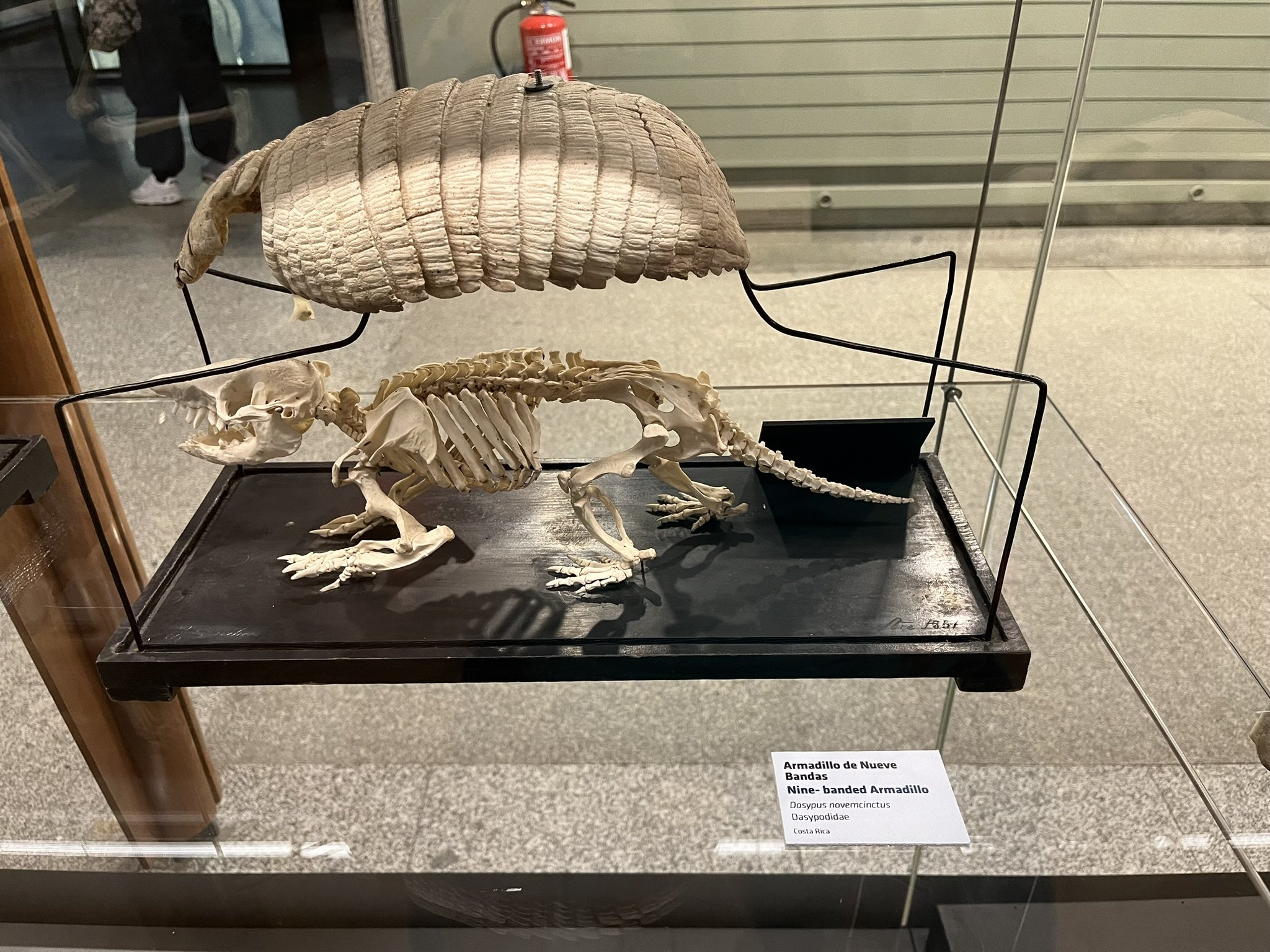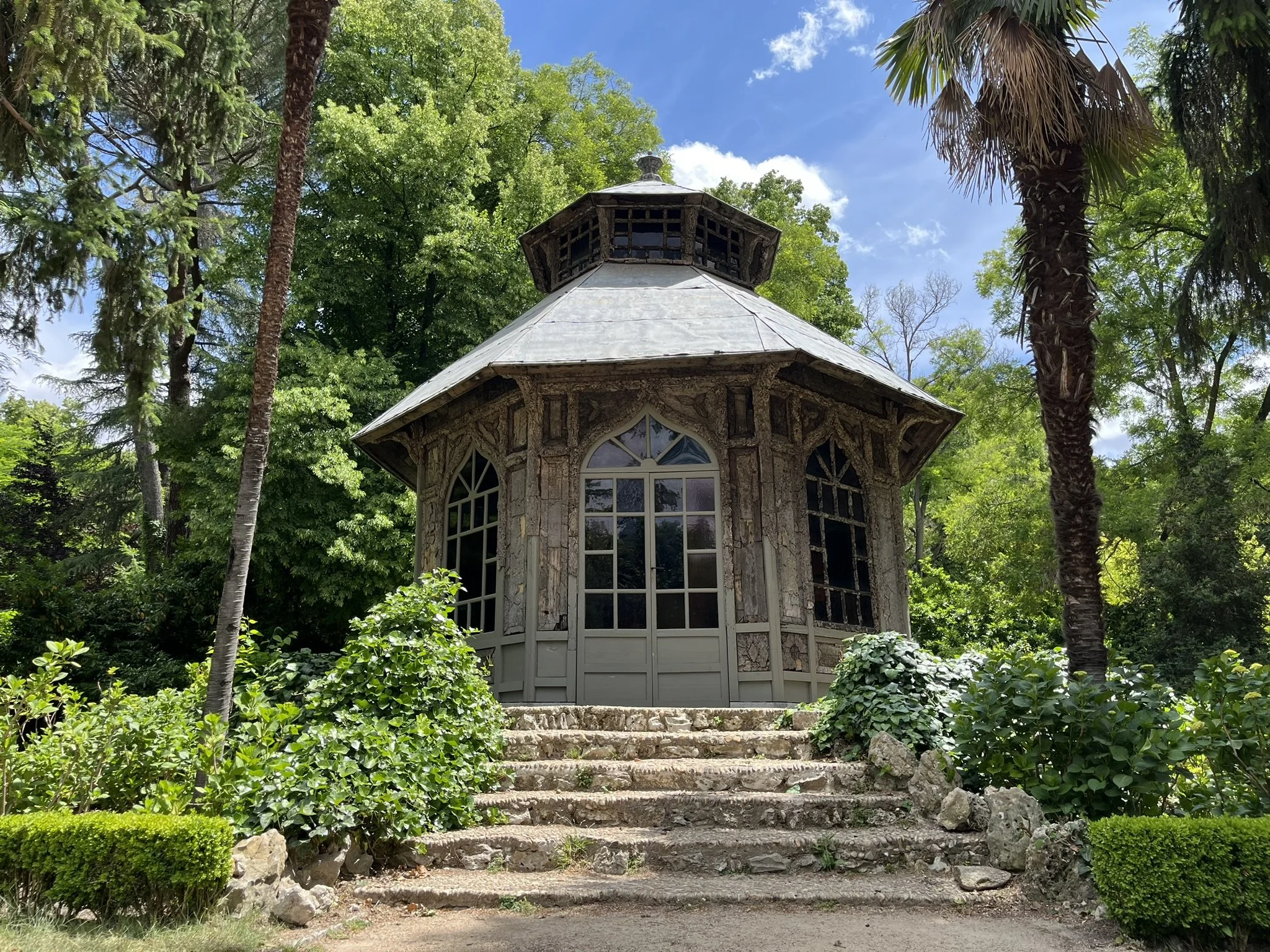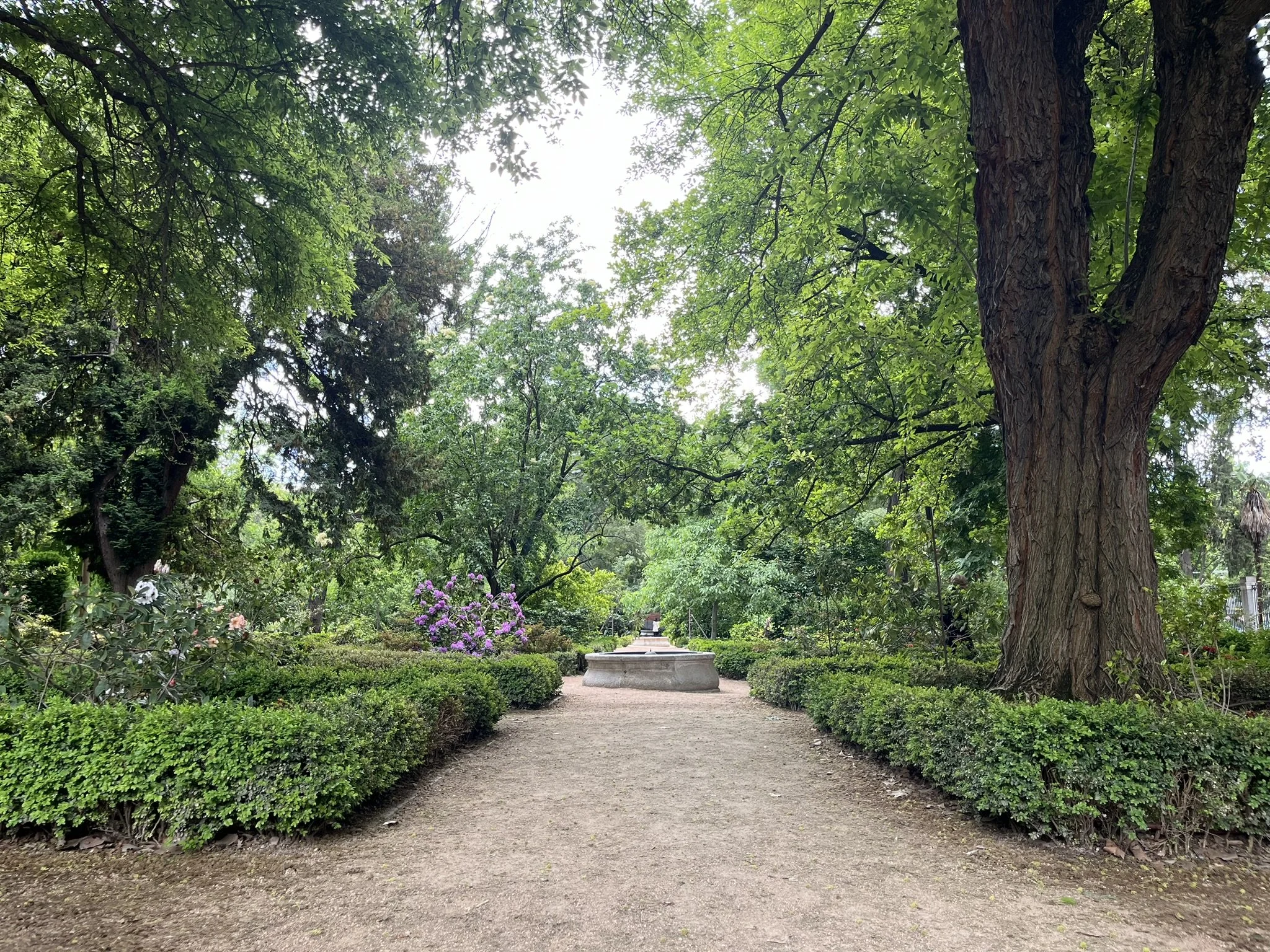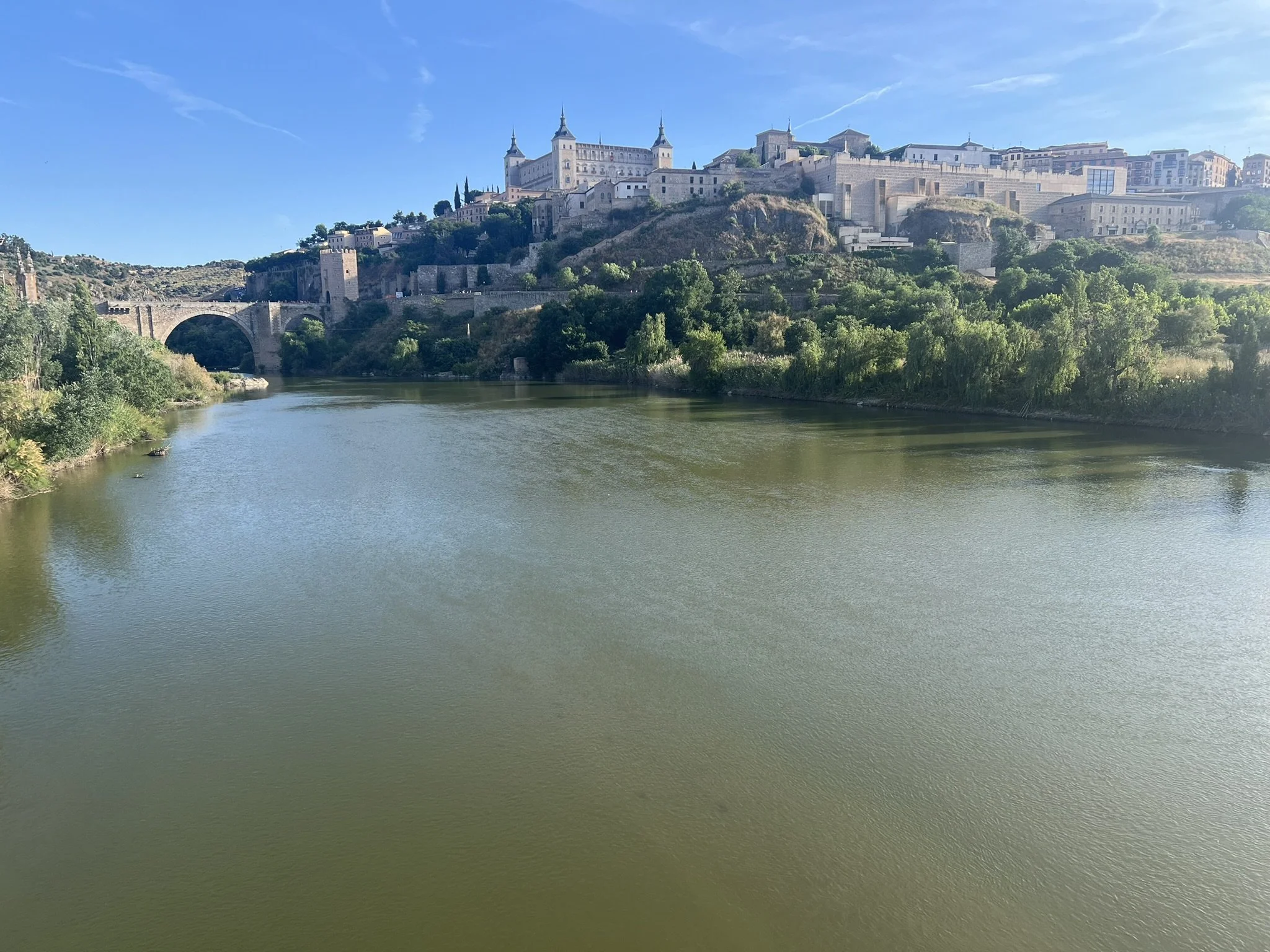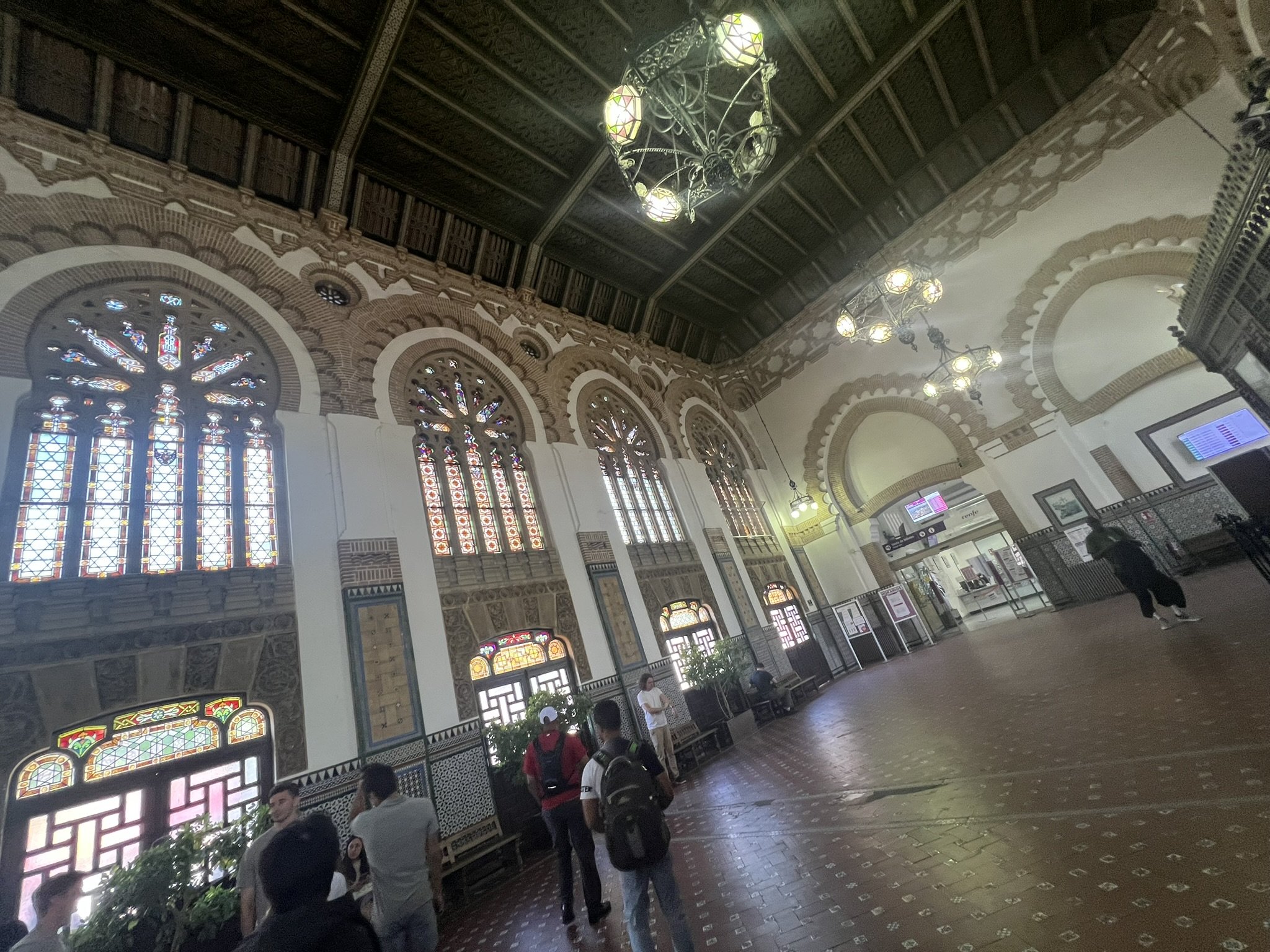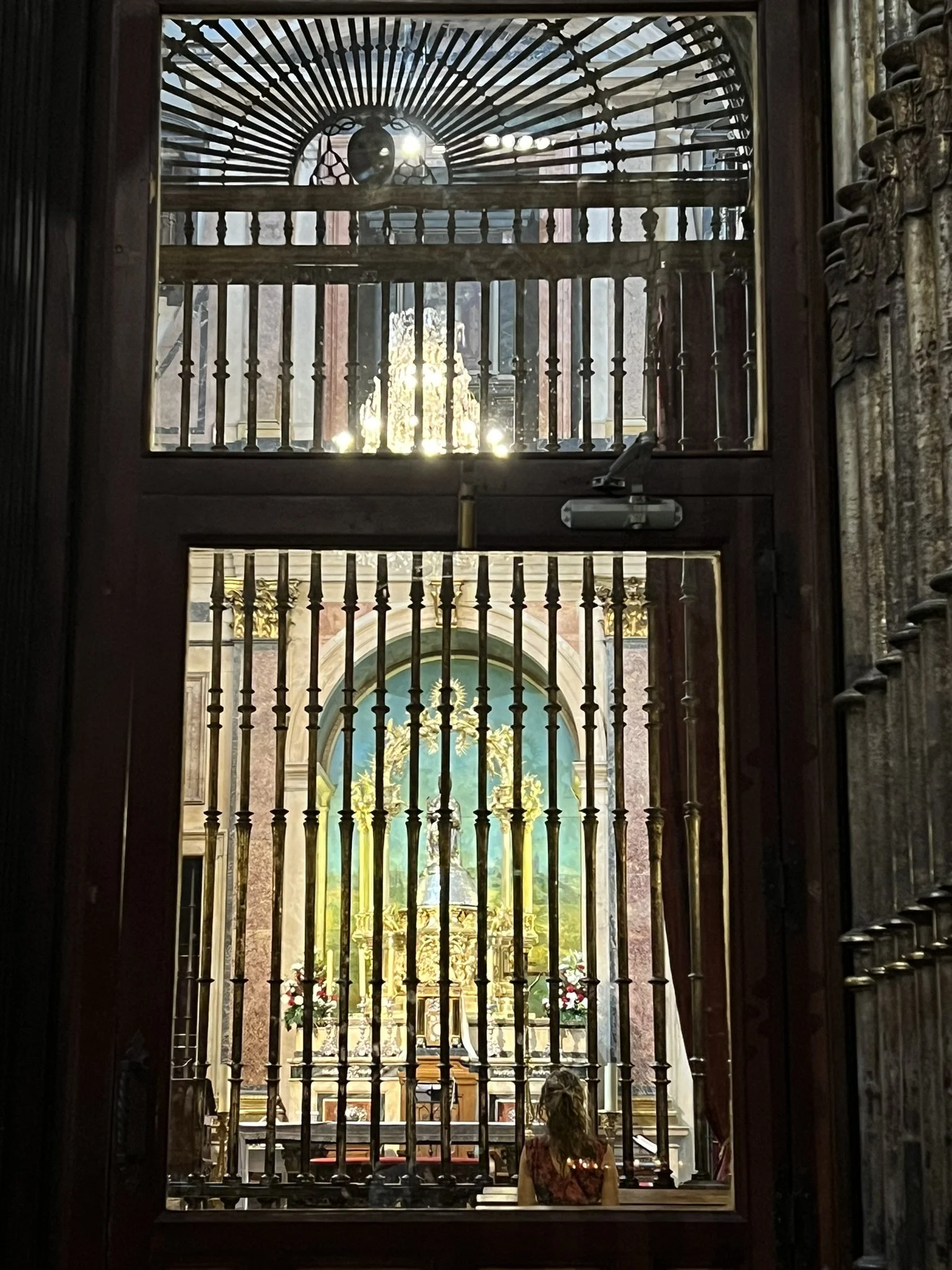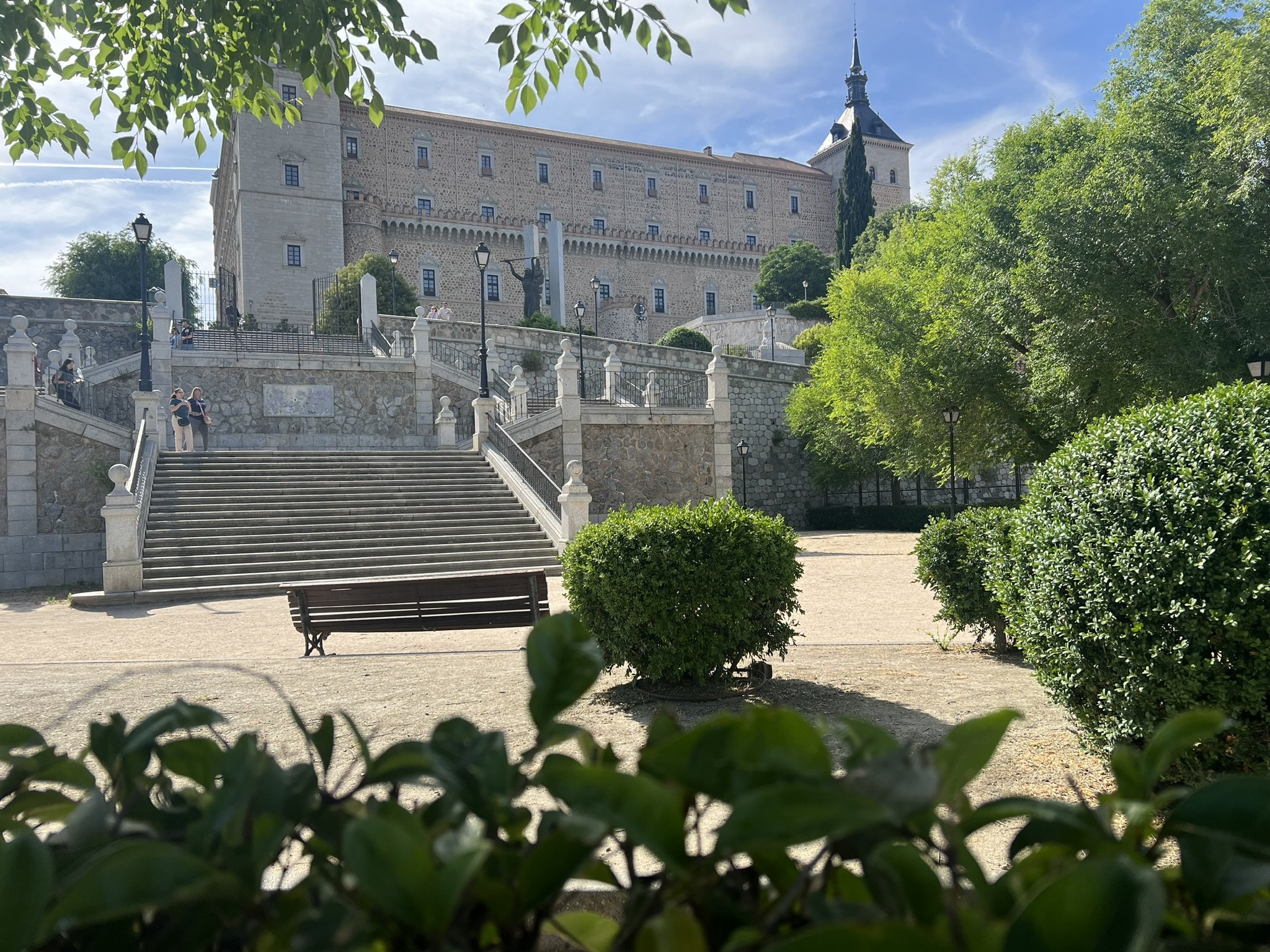Madrid
My Armo was going to Madrid for an International Business Class and as a lover of sharing experiences with me said “come along”.
He would be busy most of the day and I would be exploring on my own. It’s not a problem for me because I have a wise ole sister. When I was in grad school, I wanted to see one of my favorite authors at a book festival in Atlanta, which happened to fall on the first home UGA football game of the season. Good luck finding someone to go with me!
My sister told me to go alone and if I can’t learn to do things by myself, I would miss out on too much in life. I hesitantly went alone and had the time of my life. I went exactly where I wanted and for how long I wanted.
Back to Spain. We stayed in the Chamberi neighborhood which was where My Armo would be most of the time. We were told it’s a residential neighborhood and some people prefer to stay two metro stops away where it’s more lively. We opted for close proximity and we lucked out because the “more lively” was also more touristy. Chamberi was a vibrant local neighborhood with plenty of bars, restaurants, bakeries, convenient stores, retail stores (but not souvenir shops), and grocery stores.
When we looked at hotels in the area they were few and started around $300 for a regular hotel room. Enter Hostal Arrate. It’s in a quiet, mostly residential building with narrow meandering halls. The staff was friendly and polite and the rooms were cleaned daily. Most of the rooms have a shared bathroom but there is an option for a private bath.
Because we were in one area for 11 days, we had the luxury of time. I understand the temptation of seeing as many towns as possible in x number of days but there is a beauty in taking things slow and absorbing.
I typically would get up about 8:30 am, go for a walk and grab a pastry and cafe con leche about 10:30. I’d do a museum that usually took me about 4-5 hours and would shop my way back to the hostal. If I was hungry, I’d grab a bite to eat then get a cold drink from the convenient store and get some fruit or other snack for later. Most days I took little nap and met up with My Armo about 6 pm. We’d walk around more, maybe find a shady bench then off to dinner about 9 pm.
We mostly ate at La Tabernas which is essentially a bar. For every round of drinks you get, it is customary for them to bring a snack. I imagine it would be challenging if you’re a picky eater because you don’t pick the snack. Some of the snacks we were served were chips with anchovies, bread with blue cheese, and octopus salad (reminded me of ceviche). After the snack, we’d order two plates of food. At first we thought we were ordering tapas but the portions were large. We found out tapas are the snacks that come with the drink.
Travel Tip: Museums in Madrid were significantly less than many US museum prices. Besides the palace which was $14 plus $5 audio tour, the other museums were under $10. Many of the museums have free days either weekly or monthly. If you’re on a tight budget, plan ahead so you can take advantage of it. While I complain endlessly about what tipping culture has become in the US, I will happily pay museum admission fees. Museums are expensive to maintain and have far more expenses than what meets the eye.
Museo Casa de la Moneda, Real Casa de la Moneda, a mint museum inside of the Spanish Royal Mint
This museum was fascinating and I’m not even a money or coin person. Admission is always free, but you do need to show your passport.
It shows the history of currency from prior to coin production when things like beans contained a value. Even though it was beans, it was not considered bartering. Currency is as artistic as it is useful. It was fun to see how teeny tiny some of the coins were yet they still resemble what we know as coins today.
Almost all of the exhibits are in Spanish however, the videos have an English option and an English audio tour. Apple and Google have a translate app that if you scan the words with your camera, it will translate the sign for you.
How do you not lose the money?
Museo de America
Oh lol! I’m from America and go to a museum about us that’s in Europe. Don’t be too judgemental. Most of the Americas were under Spanish control at some point.
The museum displays quotes from some of the earliest explorers journals and letters. It showed their raw perspective filled with hope, opportunity, excitement, and observations. It was a demonstration of human spirit as much as it displayed artifacts.
The museum focused on areas south of the US. If you were curious how they interpret the Pueblo Revolt in New Mexico, you won’t find it in that museum.
I loved how they celebrated the different cultures in the Americas and not making them one people.
My favorite artifact in the museum was a display of probably the most beautiful blanket I have ever seen. It was bold, bright, and happy. If anyone knew of my college days of hot pink and lime green, you wouldn’t be surprised I would be attracted to this blanket. It was stunning.
Museo Nacional de Ciencias Naturales
I’m a sucker for a natural history museums. If you’re like me, you’ll probably end up there anyway, but if you aren’t into it, this museum is a good for you to visit. The exhibits are in English as well as Spanish, the videos are in English or have English subtitles. It’s perhaps one of the smallest natural history museums I’ve gone visited which is why it’s perfect if you don’t want to spend weeks in it. If you’re seasoned in the topic, I’m positive you’ll still find something to learn.
Charles Darwin is probably the most known theorist on evolution, but another scientist Alfred Russel Wallace also played a critical role. Darwin was an older and more established scientist, but was hesitant to publish his theory of evolution. When Wallace, a young scientist wrote to Darwin his theory of evolution that was independent of Darwin’s research but reached the same conclusion, it gave Darwin the confidence to publish his theory. Darwin asked Wallace if they could publish together. The two scientists didn’t always agree on everything even if their conclusion was the same, their reasons might be different. They always had respect for each other and built a friendship among it. As a testament of their closeness, Wallace was a pallbearer at Darwin’s funeral.
To give a little perspective for when you lose an email draft or a Word doc and have to redo your work, it could be so much worse. Wallace was returning from the Americas on a ship headed for Europe when the ship full of thousands of dead specimens, live animals, and journals caught on fire and sunk. He only managed to save his watch, some fish drawings, and part of his notes and journals.
While we’re on the topic of perspective, here’s my favorite quote from the museum that is from our man, Wallace. “The more I see of uncivilized people, the better I think of human nature on the whole, and the essential differences between so-called civilized and savage man seem to disappear.”
While I never wondered what the skeleton of an armadillo looks like, I sure was fascinated by the creature’s bones.
Real Palacio of Madrid
It’s the largest working palace in Europe. While the royal family does not live there, it is still used for state banquets and other state ceremonies.
It’s everything you think of in a palace; it sits at a high point of an area, extremely thick walls, massive courtyards, and cavernous yet glam.
One of the only rooms that was staged was what is currently used for state dinners. With the table set, it’s easy to imagine dining for hours with people draped in jewels.
Campo del Moro Gardens
The palace has two main gardens: the more formal Jardines de Sabatini and Campo del Moro.
Sabatini was under a major construction project so I wasn’t able to visit it.
Campo del Moro was mostly a woodland garden with a few formal garden spaces such as a rose-lined greenway with fountains that gives site lines to the palace and a smaller but still extensive rose garden. It’s beautiful for a tree-covered stroll or if you need a nice shady bench to crack open a good book.
Real Jardin Botanico
The garden is jam packed with surprises. It’s about 20 acres so it’s on the smaller side of botanical gardens. When you get your first peak, it looks like very formal garden layout on grid with fountains at the center of each quadrant.
While the layout in each quadrant is similar, the look and feel is drastically different based on the theme of plants. Make sure you walk all the way to the back wall because there’s a small rock path that leads you through trees and overlooks the formal garden.
Toledo
It’s a short train ride from Madrid. My first impression of Toledo was at the train station and it immediately reminded me of Santa Fe. While people often refer to the design elements of Santa Fe as Spanish, it actually has influence from the Moors. Toledo’s train station was “Moor forward”.
Old Toledo sits high on a hill and the most picturesque fortified city I’ve seen. While it is touristy and riddled with souvenir shops, the bones are beautiful with it’s narrow winding streets.
The Cathedral is stunning and is often on a must see list and there’s a reason for it. It has multiple chapels under one roof. You’ll need a ticket to enter most of the parts. However, there is a side entrance that allows you inside an adoration chapel with no admission charge. We stumbled into the entrance at the end of day. It was so peaceful. I recommend doing both: the paid ticket to see the broader scope and the adoration chapel that brings you back to the purpose of the cathedral.
Sometimes you need to take a break and pray.
If you walk outside of the main tourist streets but remain inside the walled city, there’s Toledo Army Museum. It sits on the edge of the walled area so you have magnificent views of outside of the walled city and the river that serves as a border to the walled city.
Toledo Army Museum

